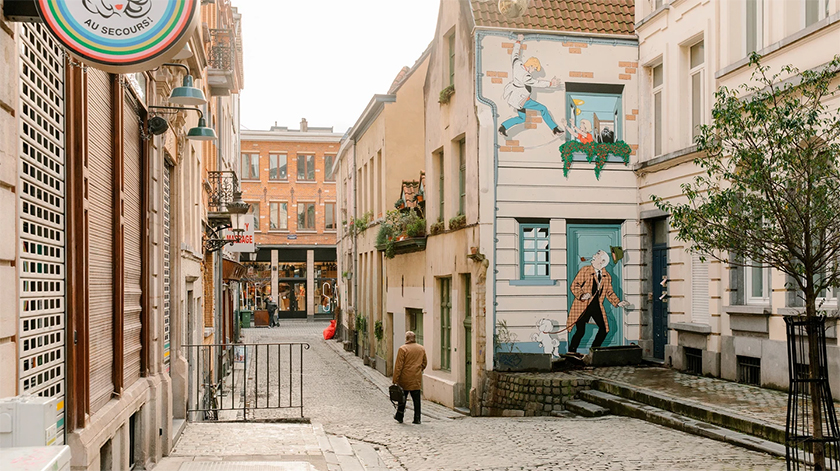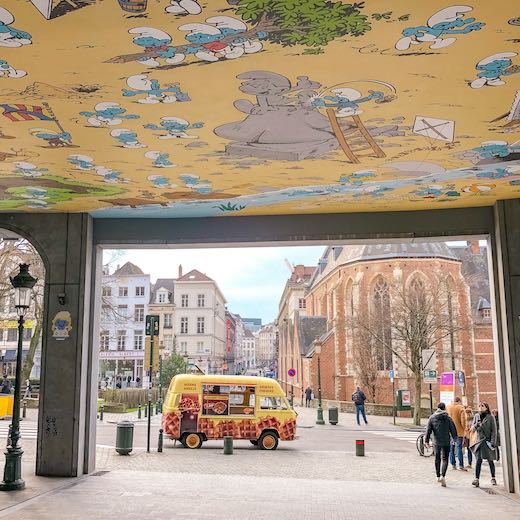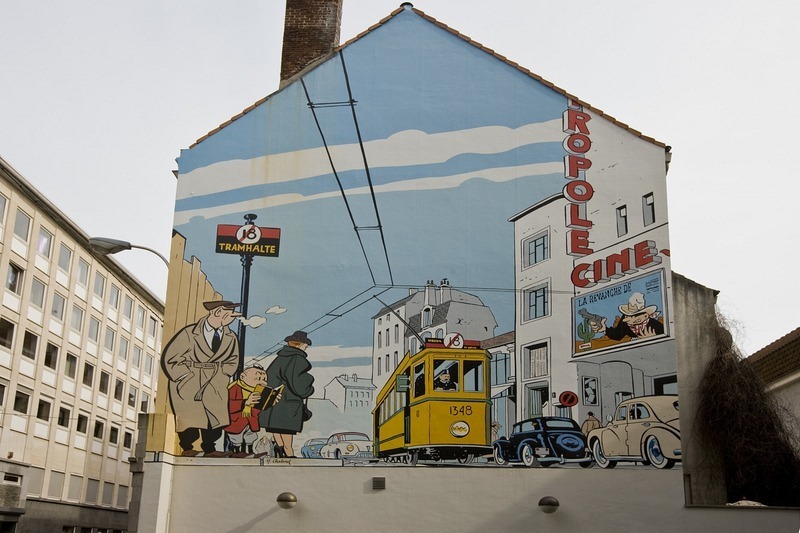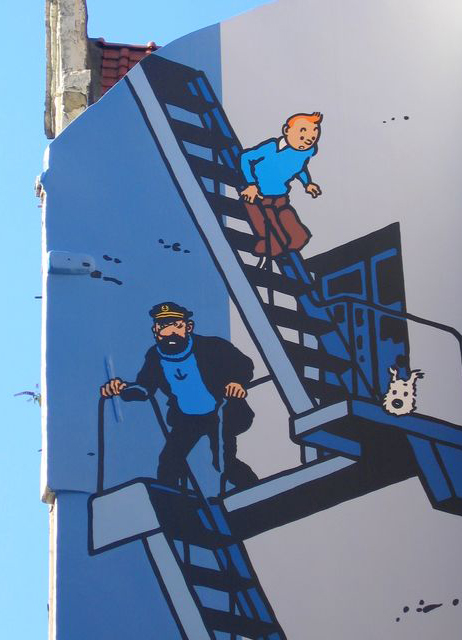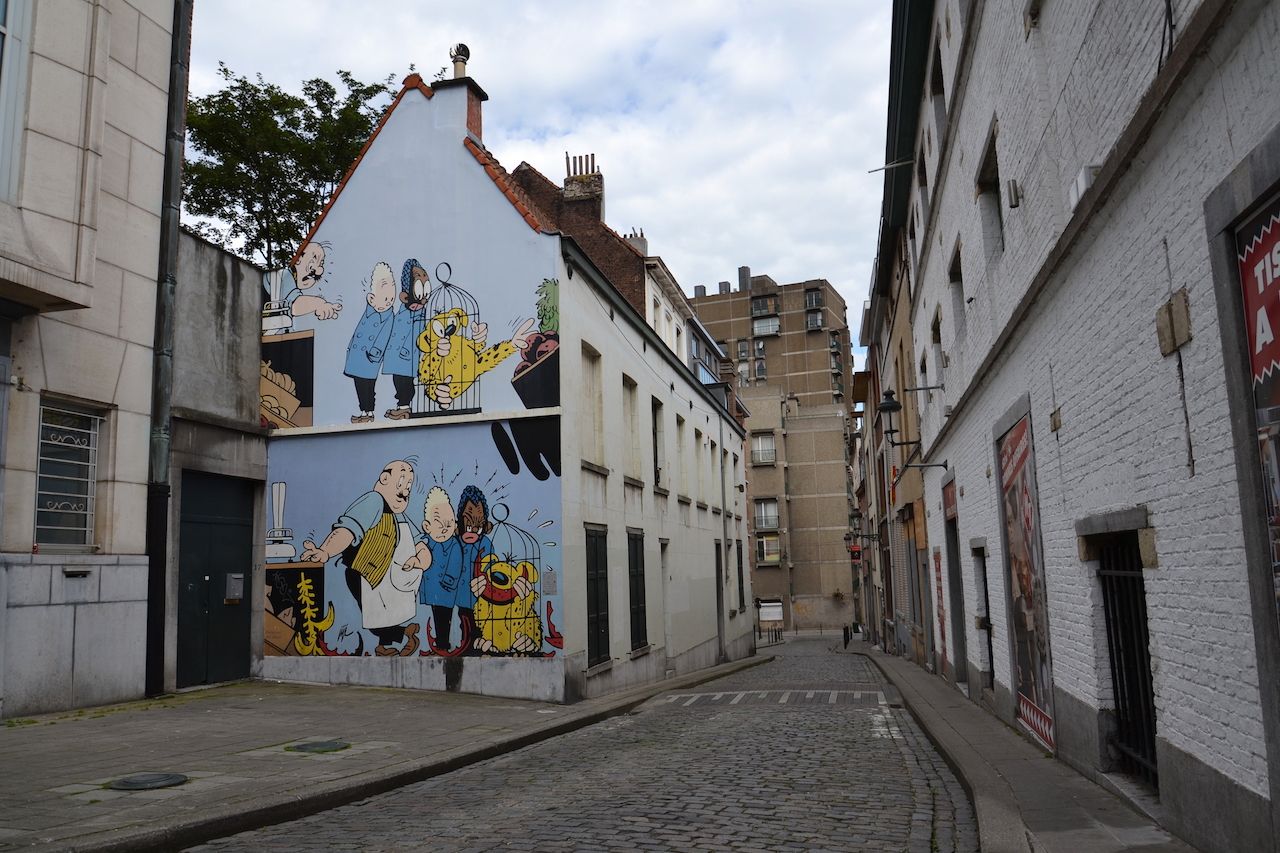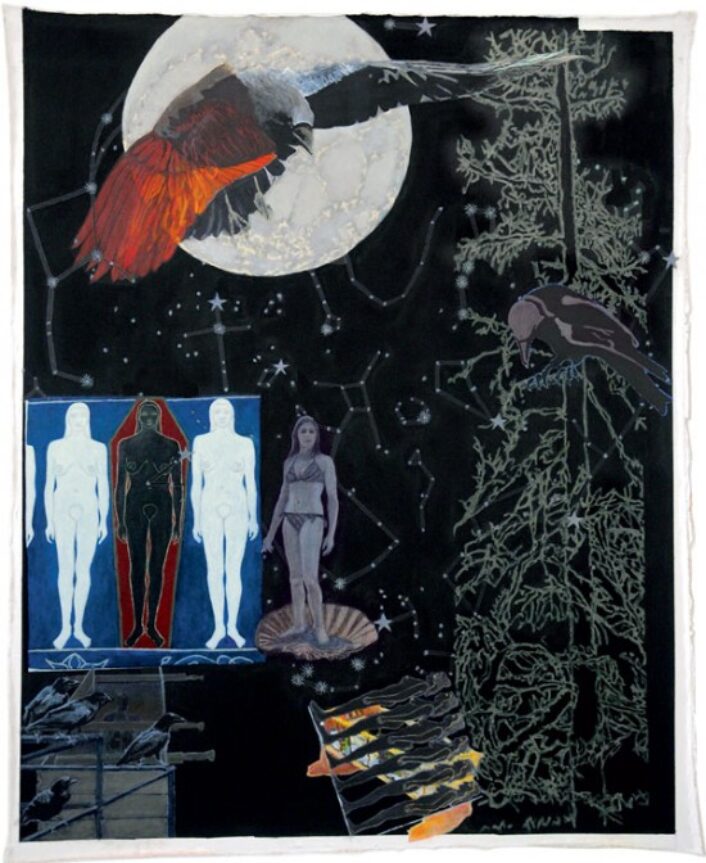Perhaps the biggest comic hero was Tintin, the upholder of justice. Over time, more than 230 million books featuring the character have been sold. Tintin, along with Ric Hochet and Spirou, is a reporter; their investigations transported them to faraway places. The chance of escape was especially poignant during the late-1940s and 1950s when Europe was slowly adjusting to a new normal following the war.
When the city’s Belgian Comic Strip Center, a museum dedicated to the art-form, decommissioned a local street’s mural of Frank Pe’s “Spirou-published” Broussaille series in 1991, the idea for comic book street murals was born.
